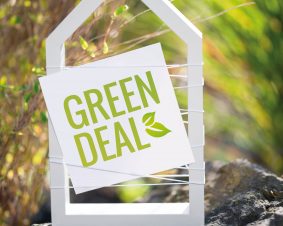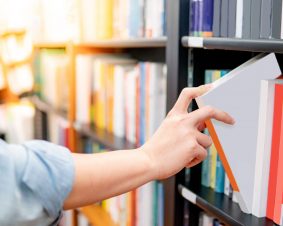 >
Spotlight March 2021: Is Nanotechnology the Swiss Army Knife against Future Pandemics?
>
Spotlight March 2021: Is Nanotechnology the Swiss Army Knife against Future Pandemics?
The COVID 19 outbreak has led to a fundamental rethinking of existing approaches to diagnosis, treatment, and prevention methods. The need for better and more efficient concepts is global and urgent. Nanotechnology has long been at the forefront of innovation and has led to advances in many different disciplines. Could this interdisciplinary field help develop a more comprehensive approach to combating COVID-19 as well as future pandemics?
This review published in the journal ACS NANO provides a general introduction to the novel coronavirus (SARS-CoV-2), the progression of the coronavirus disease 2019 (COVID-19) along with an overview of current vaccines. Additionally, some of the attempts to stop the first interaction of the virus with the target cells as well as preventing life-threatening processes are illustrated in detail. In this context, the interdisciplinary authors present and discuss several potential advantages of nanotechnology and the critical role it could have in the fight against COVID-19 and future pandemics both inside and outside the host. The authors highlight the multifunctional solutions offered by materials in the nanoscale e.g., by combining diagnostic and therapeutic into one. These nanotechnology-based-systems can increase the specificity and therefore the efficiency of immunosuppressant delivery to targeted cells resulting in a reduction of drug dose and drug distribution to nontarget organs. The authors also explain in detail the multiple ways, nanomaterials can assist vaccines or immunization research for example by boosting the upregulation required by the immune system or redirecting the immune response against antigens. Nanotechnology may similarly offer pathways to slow the spread of COVID-19; in this review, the development of self-disinfecting surfaces that would avoid contamination at hospitals or homes is also presented. Finally, to highlight the multifunctionality of nanomaterials, the authors examine how nanotechnology-based solutions could increase the safety of air-filtering devices such as masks.
Those interested in a more detailed description of emerging nanoscale materials or examples can read them in the original publication:
Weiss, C., Carriere, M., Fusco, L., Capua, I., Regla-Nava, J.A., Pasquali, M., Scott, J.A., Vitale, F., Unal, M.A., Mattevi, C. and Bedognetti, D., 2020. Toward nanotechnology-enabled approaches against the COVID-19 pandemic. ACS nano, 14(6), pp.6383-6406. DOI: 10.1021/acsnano.0c03697

Weitere Spotlights
Spotlight May 2021: Towards safe and sustainable innovation in nanotechnology: State-of-play for smart nanomaterials
The European Commission’s new Action Plan for a Circular Economy Green Deal, the new European Industrial Strategy as well as the Chemicals Strategy for Sustainability presented in October 2020 are ambitious plans to achieve a sustainable, fair and inclusive economy in the European Union. These strategies require that any new material or product must not […]
Read moreSpotlight November 2020: Nanotechnology in the public perception
In November, we would like to draw your attention to a publication that examines public perception of the safety of nanomaterials in Austria.It shows, that although there is generally a rather positive attitude towards nanomaterials, there are different opinions on safety issues from different social groups. Further clarification seems necessary. Despite the widespread use of […]
Read moreSpotlight December 2020: Rethinking Nanosafety – Part II
In December we would like to draw attention to the special issue: Rethinking Nanosafety – Part II in small. In the July Spotlight we already presented Part I. This special issue “Rethinking Nanosafety – Part II” also features research papers by renowned scientists in the field of nanosafety research. The first part of this special […]
Read moreSpotlight July 2021: The Path to Digital Material Research – It is never too late to start
Machine Learning, Artificial Intelligence, Big Data…. Have you read these words lately? No, these are not just buzzwords. The digitalisation of science is an evolving topic that is gaining importance with each passing day. That is why this month we would like to introduce you to the article “Digital Transformation in Materials Science: A Paradigm […]
Read more


